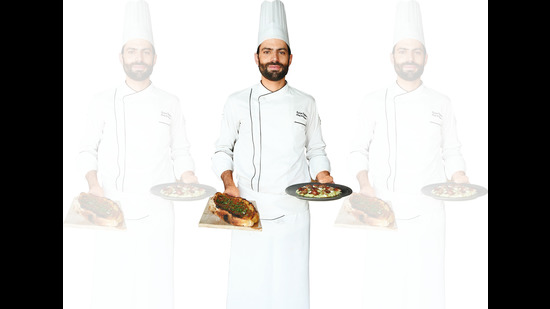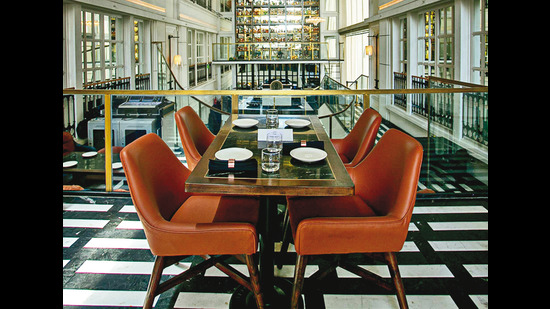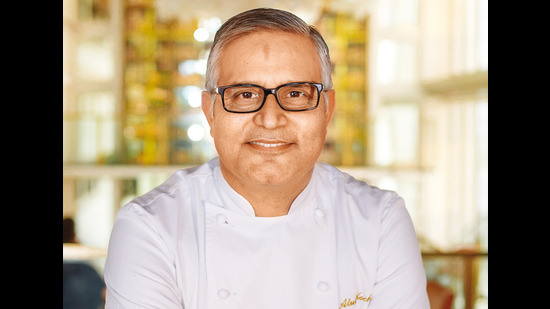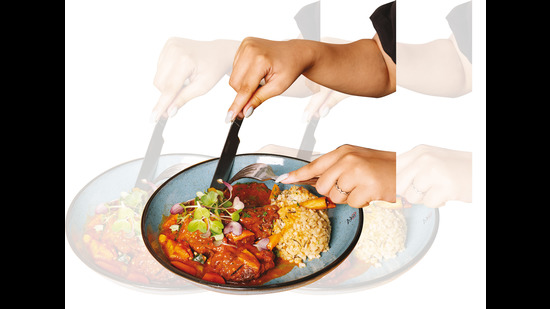What makes a restaurant successful? Thousands of people—consultants, restaurateurs, managers, chefs etc—claim to have the answer to that question. But ask yourself this: if there was a formula for making a restaurant successful, then why would so many restaurants fail?
In my experience, there is, in fact, no such formula. Different things work at different times in different places. Surefire hits—or so they expect—turn out to be damp squibs. Early successes fade quickly. And many restaurants do not move quickly enough with the times.
I have been going to very successful restaurants in Delhi over the last week and have tried to work out if there is a secret to their success. The short answer is: no. But they all have one thing in common. They surprised me.
Let’s start with K3 at the JW Marriott. When the hotel opened, I went to take a look and was sceptical about the K3 concept. It is the hotel’s coffee shop/all day dining place but consists really of three different but connected restaurants, each with its own chef: Italian, Oriental and Indian. One idea was to seat diners in the room that focussed on the cuisine of their choice but that idea was abandoned and you can sit anywhere and order what you like from any cuisine.

I was not overly impressed by the Italian food when I first went and stuck to the barbecued meats that the expat Chinese chef was good at. But even while I was somewhat restrained in my admiration, I had to concede that my initial scepticism had been proved wrong. The restaurant did well.
Then, a few years ago, the Aerocity JW got a shot of adrenaline when the Marriott stole Nitesh Gandhi away from the Gurgaon Oberoi and put him in charge. I have known Nitesh for a while and have always been stuck by his relentlessness. He always goes the extra mile to ensure that everything is perfect. He has great personal relationships with his guests but he also brings an Oberoi-style perfectionism to his hotels, moving way past the normal Marriott levels of excellence.
You note when you walk into K3 (and I have been four times in the last few weeks), that the entry management is superb. There is always someone there to greet you and guide you to a table, not easy in a large restaurant that is usually packed. And service is unobtrusive but quietly efficient. A couple of years ago, I went there with Neeraj Govil, who then looked after India for Marriott (he now has vastly expanded all-Asia responsibilities though India is still part of his portfolio), and the staff were careful to pretend that Neeraj was just another guest (though I am sure that the whole hotel was stealthily on standby).

In recent months, the food at K3 has got even better. A Southern Italian chef called Fulvio Ventura and a Singapore Chinese chef called Travis Loh have led the improvements under the watchful gaze of Sandeep Pande, the Executive Chef who can match Nitesh in energy and relentlessness.
So, why is K3 always full even when restaurants at the other Aerocity hotels can be empty? Partly, it is the quality of the food and service. But mostly, I think it is because they got the concept right: people don’t particularly like coffee shops any longer but they like the idea of three specialty restaurants in one.
Though Saga, Atul Kochar’s Delhi restaurant, has been open for many months, I only went there last week. I felt better about this when I realised that Atul himself had only seen it a few days before I did. The pandemic and its restrictions had kept him in London and he had run the restaurant, as he joked, by Zoom.
Of course, the food was good. You would expect nothing less from a chef of Atul’s calibre and standing. But what surprised me was the scale of the 200-cover restaurant. It is located in an atrium on three different levels, all of them open so that you can see the whole restaurant no matter where you sit and gaze up at the soaring ceiling.

The usual problem with atrium restaurants is: how do you fill the space? Isn’t the area that leads to the ceiling going to look too bare?
The American designer Adam Tihany, who has designed every famous New York restaurant (Daniel, Per Se, Jean-Georges etc.), discovered the solution when he designed Aureole in Las Vegas. Tihany created a 42-foot tall “wine tower” that rose into the space above the restaurant. The tower carried 10,000 bottles of wine which were only accessible if someone was hauled up to get them by cables.
Tihany had the idea of making this a spectacle for the restaurant, so young catsuited women were strapped into harnesses and lifted up to retrieve the bottles. They were called ‘wine angels’ and the concept remains one of the most innovative in the history of wine service.
Saga does pretty much the same thing, though the bottles are not retrieved by catsuited angels but by young men from Haryana (and no, they are not called ‘Wine Jats’) who cheerfully strap on harnesses and fly up to the bottles.

It is the kind of dramatic statement that is typical of the restaurant, which also sells premium spirits (whisky, for instance) at what must be lowest prices in NCR.
So, why does it work? Well, the food, of course. It is not just Atul’s dishes, but also the execution; the kitchen is run by Chef Tanvi Goswami. And it is also the audacity of the enterprise, its sheer scale and the care that has gone into building up the spirit collection. (At present, as much as 40 per cent of the revenues come from liquor.)
The surprise factor is one reason for the success of K3 and Saga, both of which are new concepts. But what about older restaurants? How do they keep the customers coming back?
I went last week to the Smokehouse Deli at the DLF Mall in Vasant Kunj. It’s been there for as long as I can remember, but while other restaurants in the mall were not necessarily full when I visited, Smokehouse was jampacked.

The secret of its renewed success, I discovered, was that it had re-invented itself. A team of chefs led by Smokehouse veteran Shamsul Wahid and Jaydeep Mukherjee (who I last wrote about when he was at Indigo Deli) has completely revamped the menu. The emphasis now is on local ingredients. The excellent Naples-style pizza is made with a high-gluten flour from Indore. The risotto is made with an Indian rice variety, not Arborio or Carnaroli. The steak is buffalo. The Brie is Indian. The pastrami in the Reuben Sandwich is made in-house.
The food quality overall is much higher than a café or a deli. The steak was so thick that I marvelled at the chef’s faith in buffalo meat. But it worked. The ribs were excellent. A large wild prawn was full of flavour. The lamb shank was so tender that I ate it with a spoon.
The old favourites were still there. I had the signature burger, which I still reckon is unbalanced and hard-to-eat (the patty is too big), but they can’t change it because regulars love it.
So, that’s another way of finding success: you evolve, you change, you innovate. But you keep enough unchanged to maintain the connect with your guests.
Running a restaurant is an art, not a science. But if you dare to think big, to do new things and to keep the relationship with your customers alive, then success is not that hard to find.
The views expressed by the columnist are personal
From HT Brunch, December 12, 2021


